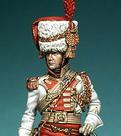metaphore
Posts: 238
Joined: 9/4/2021
Status: offline

|
quote:
ORIGINAL: Gunnulf
I think that's the angle here, lack of iron rails. I'm not a railway engineer but I think there is a big difference between the FDB teams repairing/widening the existing network largely converting the iron and lumber resources already in location, versus turning up with hundreds of kms of new iron rails to add a parallel line. Impossible? No. Challenging logistically? Certainly.
I think that doubling rail wasn't a priority either because the number of tracks is not that important at the end; other bottlenecks like rolling stock availability (locomotives, cars), number of rail docks for trains (linear platforms where freight can be handled)... and all the manpower needed to load and unload such freight, would account for many times more restrictions than the number of available tracks on a given line.
Moreover, one need also to consider all the complex ouvrages (bridges, tunnels, etc.) to be added along the way in order to increase the number of tracks for a railway.
Now, think about it:
One "standard" military train was made of (with variation) one locomotive plus 25 boxed cars, each with a 20 metric tons freight capacity. Meaning, 500 tons capacity per train for less than 500 meters of track used. At a conservative average speed of 60 km/h (1 km per minute), 2 trains per minute (1,000 tons) could be used on a single track railway for one way trafic. Hence, a capacity to "deliver" (with infinite rolling stock and unloading capacity) 60,000 tons per hour, which is equal to 1,440,000 metric tons of freight per day for a single track line!
Now, if one would use it both way, allocating 12 hours for trafic one way and the next 12 for reverse trafic, each daily capacity would represent half this ammount (720,000 tons) minus the ammount of freight lost during track clearing time. For simplicity, consider that this railway is 60 km long (1 hour), then, the track clearing time in order to reverse the trafic would ammount to 120 trains lost (1 hour of trafic) or 60,000 tons of freight... meaning there still would be a daily capacity of 660,000 tons able to be delivered at each end of the line.
But this 12 hours trafic would also mean 1,320 trains runing daily thru this single track line, hence 1,320 engines and 33,000 rail cars... Now, we'll also have to build 1,320 platforms and find the manpower for unloading as many trains!
Finally, this is what will determine the capacity and not the number of tracks. It will be based, like sea ports, on the capacity to handle freight as it is what will slow down the rotation of the rolling stock, and such rolling stock only exist in limited number.
< Message edited by metaphore -- 11/16/2021 11:14:30 AM >
|
 Printable Version
Printable Version














 New Messages
New Messages No New Messages
No New Messages Hot Topic w/ New Messages
Hot Topic w/ New Messages Hot Topic w/o New Messages
Hot Topic w/o New Messages Locked w/ New Messages
Locked w/ New Messages Locked w/o New Messages
Locked w/o New Messages Post New Thread
Post New Thread